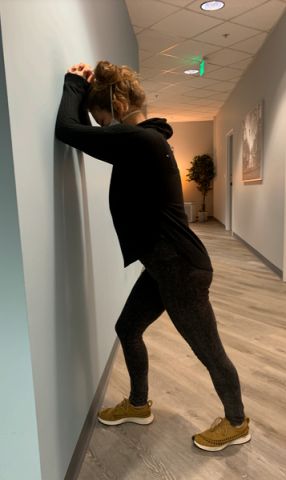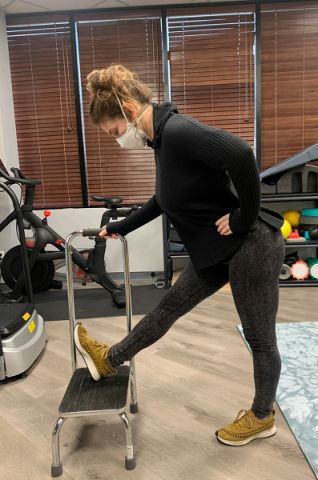
Restless Legs Syndrome (or RLS)
Restless legs syndrome (or RLS) is a condition where there are uncontrollable urges to move limbs (mostly in the legs, but sometimes in the arms) that follows a circadian pattern, namely evenings/overnight when resting.
The urges usually come with unpleasant sensations such as tingling, burning, itching, or otherwise pain. Usually, it can be alleviated by movement, but as you can imagine, it can be debilitating and impair sleep, and thus the quality of life. It is common to experience mood swings, anxiety, and depression.
It is estimated that about 3.9-14.3% of the general population suffers from RLS. It is the most common movement disorder in pregnant women. There is either primary (idiopathic) RLS, or secondary (acquired) RLS due to pregnancy, renal pathologies, diabetes, hypertension, and other metabolic conditions. The two most common risk factors for RLS are iron deficiency and kidney disease.
What Can Help Restless Legs Syndrome?
Restless legs syndrome is thought to arise from a decreased iron deficiency, specifically in the substantia nigra in the brain. There are also other hypotheses including decreased blood flow via impaired vasodilation. Based on the few hypotheses, there are some pharmaceutical options, namely some dopaminergic agents, but unfortunately they do come with side effects.
Luckily, there are non-pharmaceutical treatments that can help decrease the severity of restless legs syndrome symptoms.
- Vibration therapy: There is one vibratory counterstimuulation device called Relaxis that has been approved by the FDA as a treatment for RLS. There are also other whole-vibration plates and devices that is thought to help improve blood flow, and decrease symptoms. In our Sherman Oaks office, we feature a whole body vibration system as well.
- Exercise/yoga: One study found that at least 30 minutes of aerobic and lower-body resistance exercises 3x/week can help improve symptoms of RLS. Stretching exercises, progressive aerobic strengthening exercises and yoga poses can help improve symptoms. Our physical therapists can prescribe a program for you!
- Acupuncture: One study found significant improvement in symptoms after standard acupuncture practices, and with no side effects
- Pneumatic compression devices: Compressive devices can help improve blood flow by increasing nitric oxide and act as vasodilators. Studies show improved quality of life scores, measures of daytime sleepiness and fatigue. At our offices we have these devices to assist as a part of the treatment plan.
- Near-infrared light: Also improves symptoms through increased nitric oxide through improved blood flow to the region. One study showed 30 minute treatments 3x/week for 4 weeks showed lasting improvements in symptoms. Only side effect is some skin reactions, so make sure to monitor accordingly. We also have red and near infrared devices in all our offices.
- Cryotherapy: It can help decrease symptoms through a decreased neuronal activity. However, it is not enough to only localize it to the legs, but participating in whole-body cryotherapy in a cold air chamber is sufficient to help with symptoms.
- Massage: Foot reflexology massages 3x/week for 30-40 minutes can help reduce severity of RLS.
Based on the research, walking is extremely beneficial!
Walking 6,000-10,000 steps is helpful to relieve some of the symptoms experienced at night.
Stretches for Restless legs syndrome
Here are a few stretches that can also help with RLS:
- Calf stretch: Stand tall facing a wall, stagger your stance, bend the front knee, straighten the back knee, and bring your forearms to the wall. You should feel a gentle stretch on the back of your lower legs. Hold here for 15-30 seconds, repeat 2 times.

- Hamstring stretch: Standing tall with a stool or low chair in front of you, bring one foot onto the stool, bend at the ankle (toes up towards you), keep knee straight as you lean your upper body forward. Lean until you feel a gentle stretch in the back of your upper leg. Try to keep a neutral back and hold here 15-30 seconds, repeat 2 times on each leg.

- Quadricep stretch: Standing tall with one hand holding onto a counter, bend one knee and use your hand to hold on to the front of your foot until you feel a gentle stretch on the front of the thigh. Hold here 15-30 seconds, repeat 2 times.
None of the above stretches should be painful. If they are, stop and discontinue immediately. Then please reach out to a physical therapist at your earliest convenience for more guidance.
Restless legs syndrome is more common than we think, and can be a debilitating condition to experience.
Without healthy sleep, we are unable to be our most optimal selves, and experiencing restless legs syndrome can significantly impair our quality of life. While there are pharmaceutical treatments, it is worth trying out some of the non-pharmaceutical approaches listed above.
Don’t know where to start? Contact us to get a head start on your exercise regimen, and ask about infrared light, pneumatic compression and whole-vibration devices!
References:
Panda AK, Pandey S. Identifying risk factors for restless legs syndrome. Neurol India 2019;67:660-1.
Tipton PW, Wszolek ZK. Restless legs syndrome and nocturnal leg cramps: a review and guide to diagnosis and treatment. Polish Archive of Internal Medicine 2017;127(12)865-72.
Guay A, Houle M, O’Shaughnessy J, Descarreaux M. Current Evidence on Diagnostic Criteria, Relevant Outcome Measures, and Efficacy of Nonpharmacologic Therapy in the Management of Restless Legs Syndrome (RLS): A Scoping Review. J Manipulative Physiol Ther 2020; 43(9)930-41.
More Articles in This Series
{modulepos position=”postpartum”}
